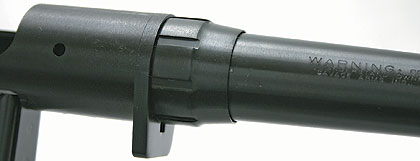I don't think it is pressure causing your problem. The problem is more than likely your brass expanding excessively lengthwise. It is possible that you don't have your sizing die set up correctly. I would bet that you are bumping your shoulder back too far..... or maybe you need to recheck your head space. You did not mention the use of a no-go, It might be long.
How are you checking your case head space?





 Reply With Quote
Reply With Quote













Bookmarks